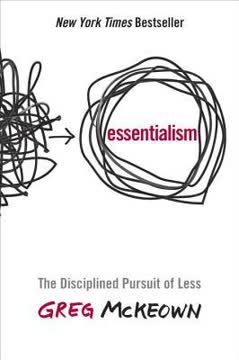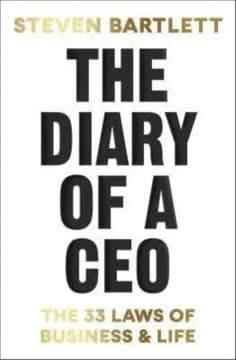Key Takeaways
1. Strategic HR aligns people practices with organizational goals
HR can and should serve as advisors to organizational leadership to develop strategic workforce plans that link to the organization's strategic plan to ensure that the right people are on board so that the firm can meet its objectives and fulfill its mission.
Strategic alignment. HR must understand the business, its economics, and strategic objectives. This allows HR to develop workforce plans and people practices that directly support organizational goals. Key areas of focus include:
- Workforce planning: Analyzing current workforce and projecting future needs
- Talent acquisition: Sourcing and selecting employees with needed skills
- Organizational design: Structuring teams and roles to maximize effectiveness
- Leadership development: Preparing current and future leaders
- Culture: Shaping organizational values and behaviors
HR should actively participate in strategic planning and decision-making. By linking HR initiatives to business outcomes, HR becomes a true strategic partner.
2. Effective recruitment and selection are crucial for organizational success
Selecting for talent is the manager's first and most important responsibility. If he fails to find people with the talent he needs, then everything else he does to help them grow will be washed as sunshine on barren ground.
Attract top talent. A strategic, well-executed recruitment process is essential for organizational success. Key elements include:
- Employer branding: Crafting a compelling employee value proposition
- Job analysis: Clearly defining required skills and competencies
- Diverse sourcing: Utilizing multiple channels to attract a variety of candidates
- Structured interviews: Using behavior-based questions to assess fit
- Assessment tools: Leveraging tests and simulations to evaluate skills
- Data-driven decisions: Using metrics to inform selection
Effective onboarding is crucial for integrating new hires. A comprehensive program should:
- Orient employees to the organization's culture and values
- Clarify job expectations and performance standards
- Facilitate relationship-building with colleagues and leaders
- Provide necessary tools, resources, and training
3. Employee engagement drives productivity and retention
Employee engagement corresponds to the level of the staff members' commitment and connection to the organization they support. High levels of engagement have a direct impact on an organization's productivity, customer satisfaction, and shareholder value.
Foster connection. Engaged employees are emotionally committed, highly productive, and more likely to stay with the organization. Key drivers of engagement include:
- Meaningful work: Connecting individual roles to organizational purpose
- Growth opportunities: Providing development and advancement paths
- Supportive management: Training leaders in coaching and feedback
- Work-life balance: Offering flexible work arrangements
- Recognition: Acknowledging and rewarding contributions
- Inclusive culture: Valuing diversity and promoting belonging
Regular engagement surveys help identify areas for improvement. Action planning based on survey results is crucial for maintaining high engagement levels.
4. Total rewards encompass compensation, benefits, and recognition
Creative benefit strategies today focus around the two most costly benefit programs: health and retirement benefits.
Holistic approach. A comprehensive total rewards strategy goes beyond base pay to include:
- Variable pay: Bonuses, profit-sharing, and equity compensation
- Health benefits: Medical, dental, vision, and wellness programs
- Retirement benefits: 401(k) plans, pensions, and financial education
- Work-life programs: Flexible schedules, paid time off, and family leave
- Recognition: Formal and informal acknowledgment of contributions
- Career development: Training, mentoring, and advancement opportunities
Effective total rewards programs should be:
- Competitive with market practices
- Aligned with organizational culture and values
- Flexible to meet diverse employee needs
- Communicated clearly to maximize perceived value
Regular benchmarking and employee feedback help ensure the program remains effective and valued.
5. Performance management should be an ongoing, collaborative process
Performance management requires continual attention to each employee, monitoring and evaluating his or her performance against the job's requirements and standards for success.
Continuous feedback. Effective performance management is an ongoing process, not just an annual event. Key elements include:
- Clear expectations: Defining measurable goals and success criteria
- Regular check-ins: Frequent discussions on progress and challenges
- Coaching: Providing guidance and support to improve performance
- Development planning: Identifying growth opportunities and action steps
- Recognition: Acknowledging achievements and contributions
- Fair evaluation: Assessing performance objectively against standards
Many organizations are moving away from traditional annual reviews to more agile approaches that emphasize:
- Real-time feedback
- Forward-looking discussions
- Employee-driven goal-setting
- Continuous development
This shift aims to improve engagement, accelerate performance, and better align individual efforts with organizational objectives.
6. Employee development is essential for individual and organizational growth
Organizations invest a great deal of time and money to hire and develop their employees and, after all that effort, want to retain as many as possible.
Continuous learning. Employee development benefits both individuals and the organization by:
- Enhancing skills and knowledge to improve job performance
- Preparing employees for future roles and responsibilities
- Increasing engagement and retention of top talent
- Fostering innovation and adaptability to change
Effective development strategies include:
- Formal training programs (in-person and online)
- On-the-job learning experiences
- Mentoring and coaching relationships
- Job rotations and stretch assignments
- Self-directed learning opportunities
Organizations should create a culture of continuous learning by providing resources, encouragement, and accountability for development. Regular career discussions help align individual aspirations with organizational needs.
7. Positive employee relations foster a productive work environment
The cornerstone of employee relations is not about rules. It is about an organizational culture that treats people fairly, professionally, and respectfully.
Build trust. Positive employee relations create a work environment where employees feel valued, respected, and supported. Key elements include:
- Clear policies and procedures: Establishing fair and consistent guidelines
- Open communication: Fostering transparency and two-way dialogue
- Conflict resolution: Addressing issues promptly and fairly
- Employee voice: Providing channels for feedback and suggestions
- Work-life balance: Supporting employee well-being
- Recognition: Acknowledging contributions and achievements
Managers play a crucial role in employee relations by:
- Modeling organizational values
- Providing regular feedback and coaching
- Addressing performance issues promptly
- Recognizing and rewarding good performance
- Fostering team cohesion and collaboration
Organizations with strong employee relations tend to have higher engagement, lower turnover, and better overall performance.
8. Risk management protects employees and the organization
Concerns about employee health and safety have evolved into risk management systems that also include concerns about individual and organizational security and privacy.
Proactive protection. Effective risk management safeguards employees, assets, and reputation. Key areas of focus include:
- Workplace safety: Identifying hazards and implementing controls
- Health and wellness: Promoting employee well-being
- Information security: Protecting sensitive data and systems
- Business continuity: Planning for potential disruptions
- Compliance: Ensuring adherence to laws and regulations
- Crisis management: Preparing for and responding to emergencies
Risk management strategies should:
- Identify potential risks through regular assessments
- Prioritize risks based on likelihood and potential impact
- Implement controls to mitigate or eliminate risks
- Monitor effectiveness of risk management efforts
- Continuously improve processes based on lessons learned
A strong risk management culture involves all employees in identifying and addressing potential issues.
9. Ethical and legal compliance underpins all HR practices
Employers must keep employees informed by: Displaying the OSHA poster. Providing copies of rules and regulations. Posting OSHA citations. Notifying employees exposed to hazardous agents at levels exceeding OSHA standards and informing them of corrective actions.
Ethical foundation. Compliance with employment laws and ethical standards is crucial for organizational success and reputation. Key areas include:
- Equal employment opportunity: Preventing discrimination and harassment
- Wage and hour laws: Ensuring fair compensation practices
- Health and safety regulations: Providing a safe work environment
- Privacy protection: Safeguarding employee and customer data
- Labor relations: Respecting employee rights to organize
Effective compliance programs involve:
- Regular training for managers and employees
- Clear policies and procedures
- Mechanisms for reporting concerns
- Prompt investigation and resolution of issues
- Regular audits to ensure compliance
Beyond legal requirements, organizations should strive to create an ethical culture that values integrity, fairness, and respect. This promotes trust, engagement, and positive employee relations.
Last updated:
FAQ
What’s "The Big Book of HR" by Barbara Mitchell about?
- Comprehensive HR resource: "The Big Book of HR" is a detailed guide covering all major HR functions, including recruitment, employee engagement, compensation, development, and employee relations.
- Strategic HR focus: The book emphasizes aligning HR practices with organizational goals, workforce planning, and legal compliance.
- Practical tools and examples: It provides sample forms, checklists, policies, and discussion questions to help readers apply concepts in real-world settings.
- Structured approach: The content is organized into key sections, making it easy to navigate topics from hiring to ending employment relationships.
Why should I read "The Big Book of HR" by Barbara Mitchell?
- Expert insights: Barbara Mitchell and Cornelia Gamlem bring decades of HR leadership and consulting experience, offering credible, actionable advice.
- Broad and deep coverage: The book is valuable for both new and experienced HR professionals, covering foundational knowledge and advanced strategies.
- Real-world application: It includes practical guidelines, sample documents, and discussion questions to help implement effective HR programs.
- Addresses current challenges: The book tackles issues like the gig economy, changing workforce demographics, and emerging HR trends.
What are the key takeaways from "The Big Book of HR" by Barbara Mitchell?
- HR as a strategic partner: HR must actively participate in organizational strategy, workforce planning, and leadership development.
- Employee engagement and retention: Engaged employees perform better and stay longer; HR should design programs to foster engagement and flexibility.
- Legal compliance and risk management: Understanding employment law and compensation regulations is critical to avoid costly mistakes.
- Continuous development: Ongoing coaching, training, and performance management are essential for employee growth and succession planning.
What are the best quotes from "The Big Book of HR" by Barbara Mitchell and what do they mean?
- "HR must be a strategic partner, not just an administrative function." This highlights the importance of HR’s role in shaping organizational direction.
- "Employee engagement is the emotional commitment employees have to their organization and its goals." This underscores the link between engagement and organizational success.
- "Benefits are only valuable if employees understand and use them." Effective communication is crucial for maximizing the impact of benefits programs.
- "Critical conversations are essential dialogues for performance feedback, discipline, and conflict resolution." Open, two-way communication is key to resolving workplace issues.
How does "The Big Book of HR" by Barbara Mitchell define and approach workforce planning and succession planning?
- Workforce planning process: The book outlines a four-step process: analyze current workforce, determine future skills, conduct gap analysis, and implement plans with measurable goals.
- Succession planning integration: Succession planning is used to identify and prepare employees for key roles, ensuring business continuity.
- Leadership involvement: Senior leadership should be involved, and plans should remain flexible to adapt to changing needs.
- Communication and retention: Open communication with potential successors helps maximize retention and development.
What legal aspects of employee rights and compensation are covered in "The Big Book of HR" by Barbara Mitchell?
- Employment-at-will and exceptions: The book explains the doctrine and its limitations, including public policy and implied contract exceptions.
- Anti-discrimination laws: It covers Title VII, ADA, ADEA, GINA, and the Pregnancy Discrimination Act, detailing protections and compliance requirements.
- Compensation laws: The Equal Pay Act, Lilly Ledbetter Fair Pay Act, and FLSA are discussed, emphasizing pay equity and record-keeping.
- Compliance best practices: HR professionals are advised to train managers, audit pay practices, and stay updated on federal and state laws.
What practical advice does "The Big Book of HR" by Barbara Mitchell give on recruitment and hiring?
- Strategic recruitment alignment: Recruitment should align with workforce planning and organizational culture, considering flexible staffing options.
- Defining hiring criteria: Use job analysis to define required and preferred skills, and apply behavioral interviewing techniques.
- Internal vs. external hiring: The book discusses the pros and cons of promoting from within versus hiring externally, with tips for fair internal postings.
- Candidate experience: Emphasizes structured interviews, legal compliance, and thorough reference and background checks.
How does "The Big Book of HR" by Barbara Mitchell address employee engagement and retention?
- Engagement definition: Employee engagement is the emotional commitment to the organization and its goals, driving productivity and retention.
- Retention strategies: Strategic retention starts with recruitment and continues through onboarding and development.
- Intrinsic motivators: Autonomy, mastery, and purpose are highlighted as key drivers of engagement.
- Manager’s role: First-line supervisors are critical in fostering engagement through communication, recognition, and support.
What guidance does "The Big Book of HR" by Barbara Mitchell offer on workplace flexibility and telecommuting?
- Changing work environment: Technology and societal shifts have made flexibility a key tool for retention and recruitment.
- Flexible work arrangements: Options include compressed workweeks, flex-time, telework, job sharing, and phased retirement.
- Implementation tips: Programs should align with culture, involve management, and include clear communication and measurement.
- Telecommuting considerations: The book covers job suitability, technology, cybersecurity, and legal compliance for remote work.
How does "The Big Book of HR" by Barbara Mitchell guide the development of compensation and total rewards systems?
- Compensation philosophy: Organizations must decide whether to lead, meet, or lag the market and align pay systems with culture and strategy.
- Salary structure development: Job analysis, evaluation methods, and salary surveys are used to create equitable pay ranges.
- Pay and incentive systems: The book explains pay-for-performance, variable pay, and incentive plans, with advice on effective program design.
- Legal compliance: Stresses adherence to FLSA, Equal Pay Act, and ERISA, with regular audits and training.
What does "The Big Book of HR" by Barbara Mitchell say about employee benefits and communication?
- Mandatory and voluntary benefits: Covers Social Security, Medicare, unemployment insurance, workers’ compensation, and voluntary benefits like health and retirement plans.
- Compliance with benefit laws: Explains USERRA, ACA, and COBRA requirements for employers.
- Creative benefits strategy: Recommends tailoring benefits to workforce needs and incorporating wellness programs.
- Effective communication: Suggests using multiple methods to ensure employees understand and utilize their benefits.
How does "The Big Book of HR" by Barbara Mitchell address performance management and employee development?
- Needs assessment: Stresses the importance of identifying skill gaps before designing development programs.
- Development methods: Covers training, coaching, mentoring, on-the-job training, and job rotation, linking them to organizational goals.
- Performance management trends: Discusses traditional appraisals and emerging trends like continuous feedback and real-time check-ins.
- Legal and generational considerations: Advises on making appraisals legally defensible and managing diverse generational expectations.
What emerging trends and challenges in HR are highlighted in "The Big Book of HR" by Barbara Mitchell?
- Changing workforce dynamics: Discusses globalization, technology, and the rise of the gig economy and contingent workers.
- Innovative HR practices: Highlights unlimited vacation, enhanced parental leave, and corporate universities for development.
- Future of work: Calls for re-engineering the social contract with portable benefits for freelancers and contractors.
- Strategic adaptation: Warns that failure to adapt may lead to legislative mandates or increased unionization.
Review Summary
The Big Book of HR receives generally positive reviews, with an average rating of 3.95 out of 5. Readers appreciate its comprehensive overview of HR topics, including recruiting, compensation, and employee development. Many find it informative and well-written, with practical insights and examples from real companies. Some reviewers note its usefulness for those new to HR or seeking to understand the field better. However, a few critics feel it lacks depth or find it less engaging. The book's print format is mentioned as a potential drawback, as some information may become outdated quickly.
Similar Books










Download PDF
Download EPUB
.epub digital book format is ideal for reading ebooks on phones, tablets, and e-readers.




